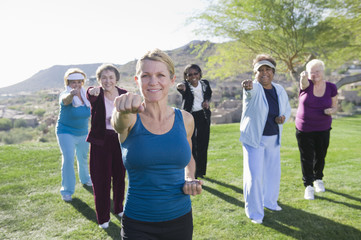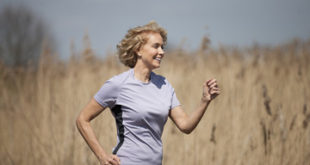Walk around any bustling Asian city in the early morning and you’re bound to see countless locals engaged in the ancient craft of Tai Chi. Public parks, gardens and even balconies are filled with people of all ages starting the day with this form of moving meditation. With today’s fast pace of life, there’s a lot to be said about the discipline of starting the day at a relaxed speed, refocusing your energies and reducing stress. But for active agers, the benefits are far stronger than that.
What’s it all about?
 Tai Chi is actually a form of ancient Chinese martial arts that evolved into the practice of slow, tranquil movements, most commonly recognised as “hand pushing”. The fundamentals of tai chi are based around strengthening your qi. Qi (pronounced ‘chee’) is believed to flow through invisible channels or meridians in the body and when qi is disrupted, illness is the result.
Tai Chi is actually a form of ancient Chinese martial arts that evolved into the practice of slow, tranquil movements, most commonly recognised as “hand pushing”. The fundamentals of tai chi are based around strengthening your qi. Qi (pronounced ‘chee’) is believed to flow through invisible channels or meridians in the body and when qi is disrupted, illness is the result.
Tai Chi has many reported health benefits including suppleness, stress reduction, mental alertness, better balance and coordination and is thought to be partly responsible for healthy longevity in certain Asian nations.
Who’s it for?
Tai Chi is suitable for most people from children to the elderly and can be performed by those in wheelchairs. You don’t necessarily need a medical check to get started, as the pace is kind enough on “not as fit as I used to be” bodies. However, it is still recommended to talk to your health professional if you’ve been sedentary for a while or have any existing conditions or injuries.
How to get started?
Like yoga and pilates, there are plenty of do-it-yourself home helpers like books and dvds. However, you generally need to have completed formal classes with an instructor before feeling confident or motivated to go it alone. The basic set of movements can take several months to learn the right technique. And it’s important that you practice until you can follow a sequence of moves as if on autopilot.
So it’s best to sign up for a block of classes and give yourself plenty of time to find your groove. There are specialised seated classes and those targeting a specific complaint, like arthritis too. As with any class, make sure you check out the certification and experience of the instructor and the conducive and convenient location.
By Emma Stirling APD
Layman DK (2009) Dietary Guidelines should reflect new understandings about adult protein needs. Nutrition and Metabolism, 13, 12.
Nair KS (2005) Aging Muscle. American Journal of Clinical Nutrition, 81, 953-963.
Tessari P, et al. (2007) Slow versus fast proteins in the stimulation of beta-cell response and the activation of the entero-insular axis in type 2 diabetes. Diabetes Metabolism Research and Review, 23, 378-385.
Fonterra Nutrition Global Consumer Research Media Release 2012









mama80176 - 6 years ago
I started Tai Chi about a year ago and have found genuine health benefits. My memory is clearer, my chronic back pain is lesser, my balance is improving. I am doing it the long hard way with an expert teacher who wont let us progress till we are near perfect in the form we are attempting. However even the beginners class shd help tremendously.